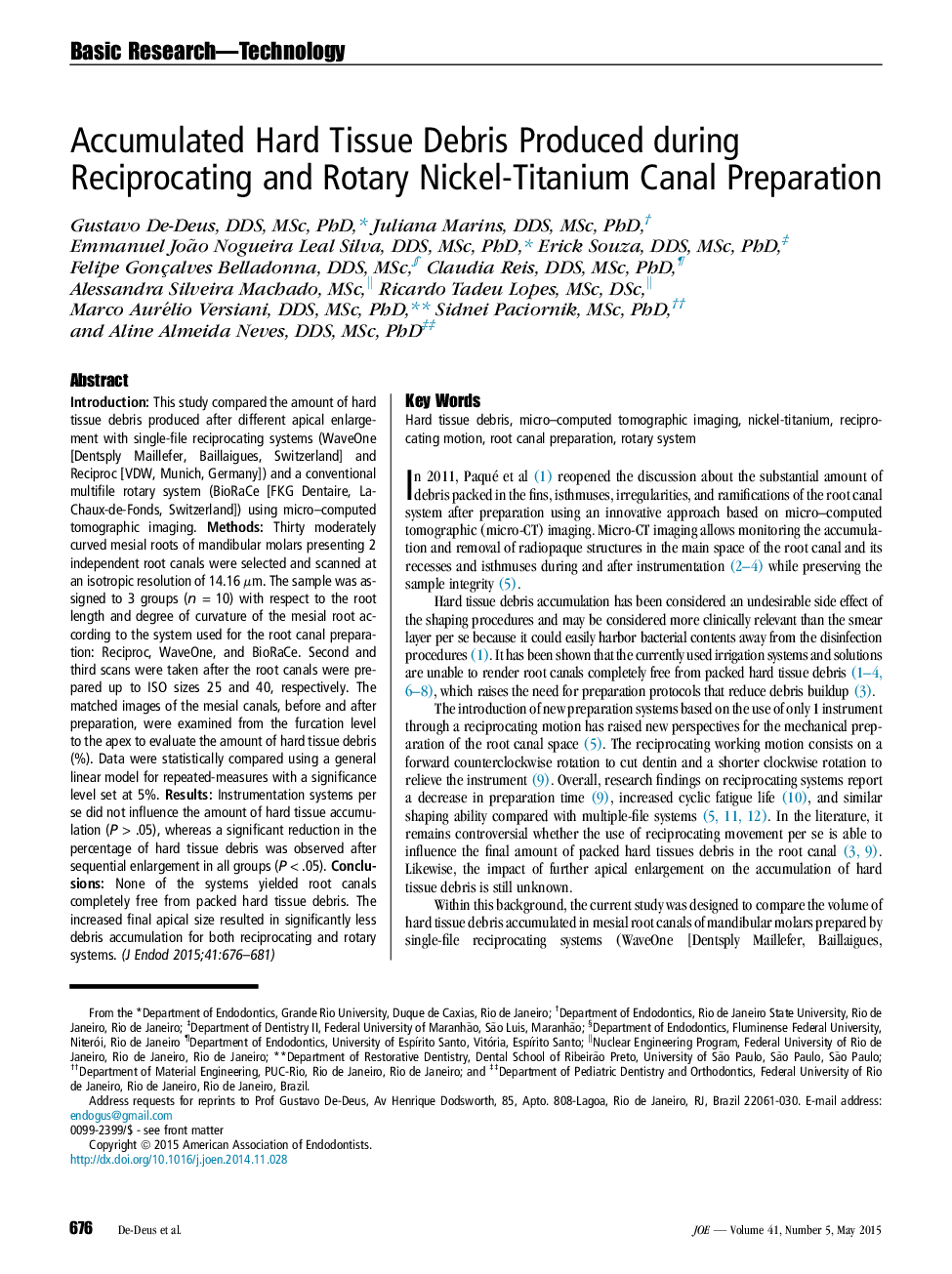| کد مقاله | کد نشریه | سال انتشار | مقاله انگلیسی | نسخه تمام متن |
|---|---|---|---|---|
| 3150290 | 1197507 | 2015 | 6 صفحه PDF | دانلود رایگان |
• Single-file reciprocating systems showed a similar amount of hard tissue packed debris than rotary one.
• Overall, instrumentation systems did not influence on the amount of accumulated hard tissue debris.
• Larger apical preparations have a significant impact on the amount of accumulated hard tissue debris and it can be regarded as a efficient antidebris strategy.
• 3D Micro-CT nondestructive technique plus digital image analysis were used as analytical tools.
• There is no similar peer-reviewed evidence on that topic, thus far.
IntroductionThis study compared the amount of hard tissue debris produced after different apical enlargement with single-file reciprocating systems (WaveOne [Dentsply Maillefer, Baillaigues, Switzerland] and Reciproc [VDW, Munich, Germany]) and a conventional multifile rotary system (BioRaCe [FKG Dentaire, La-Chaux-de-Fonds, Switzerland]) using micro–computed tomographic imaging.MethodsThirty moderately curved mesial roots of mandibular molars presenting 2 independent root canals were selected and scanned at an isotropic resolution of 14.16 μm. The sample was assigned to 3 groups (n = 10) with respect to the root length and degree of curvature of the mesial root according to the system used for the root canal preparation: Reciproc, WaveOne, and BioRaCe. Second and third scans were taken after the root canals were prepared up to ISO sizes 25 and 40, respectively. The matched images of the mesial canals, before and after preparation, were examined from the furcation level to the apex to evaluate the amount of hard tissue debris (%). Data were statistically compared using a general linear model for repeated-measures with a significance level set at 5%.ResultsInstrumentation systems per se did not influence the amount of hard tissue accumulation (P > .05), whereas a significant reduction in the percentage of hard tissue debris was observed after sequential enlargement in all groups (P < .05).ConclusionsNone of the systems yielded root canals completely free from packed hard tissue debris. The increased final apical size resulted in significantly less debris accumulation for both reciprocating and rotary systems.
Journal: Journal of Endodontics - Volume 41, Issue 5, May 2015, Pages 676–681
